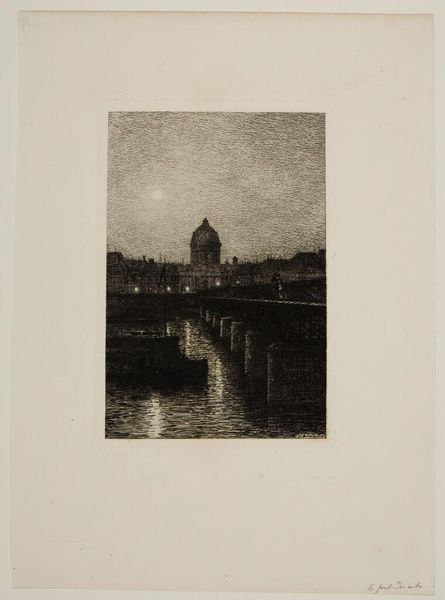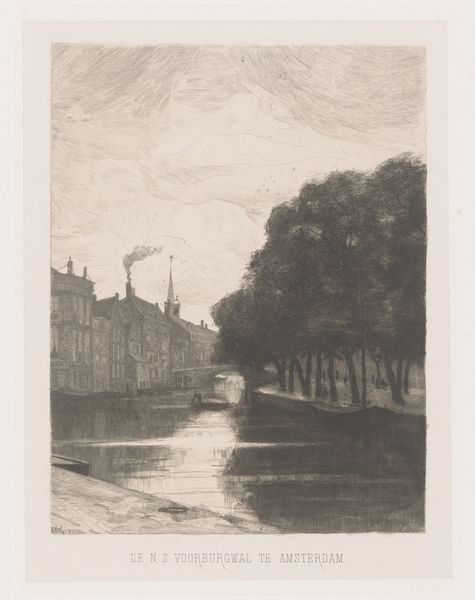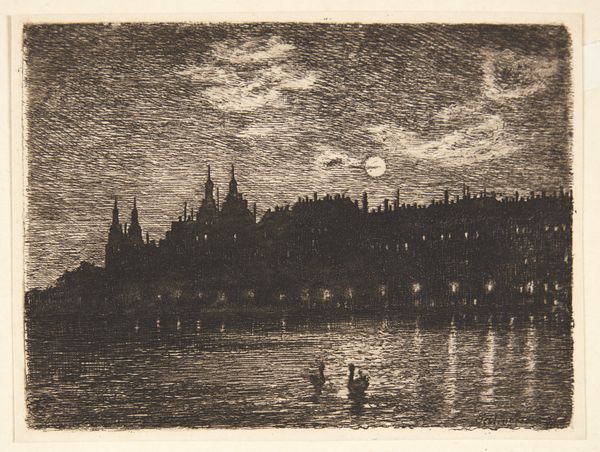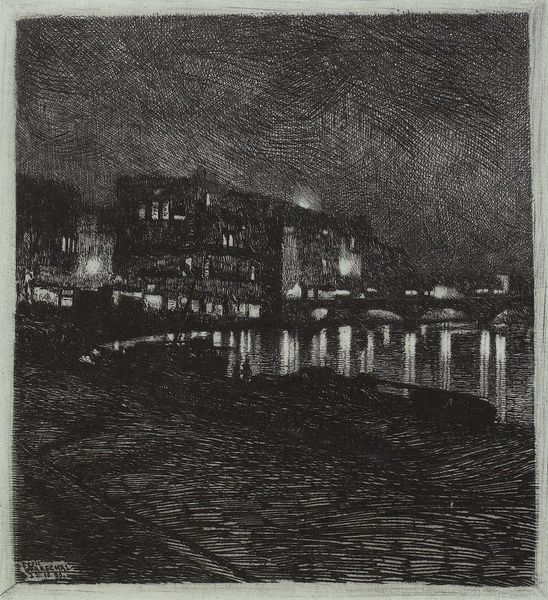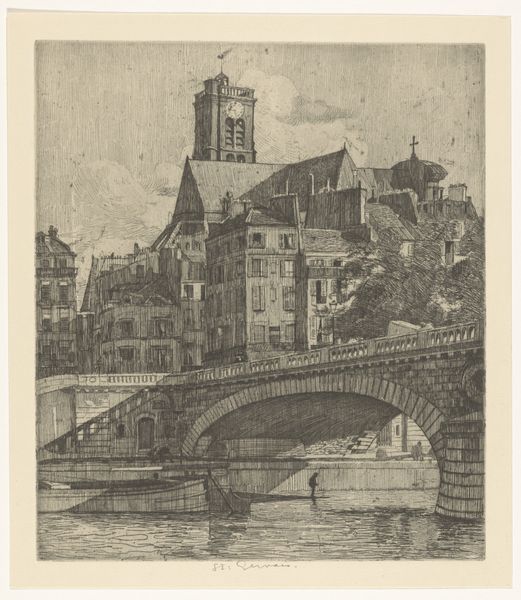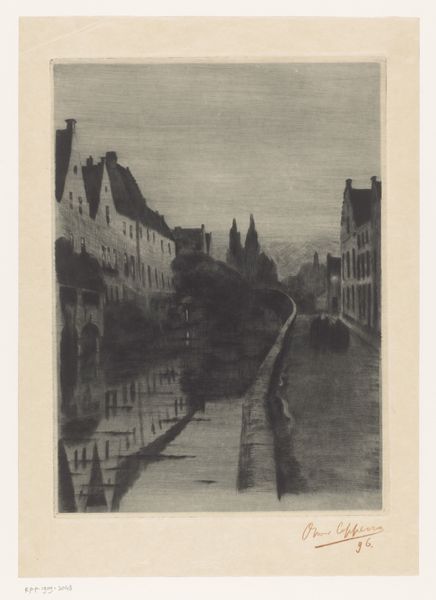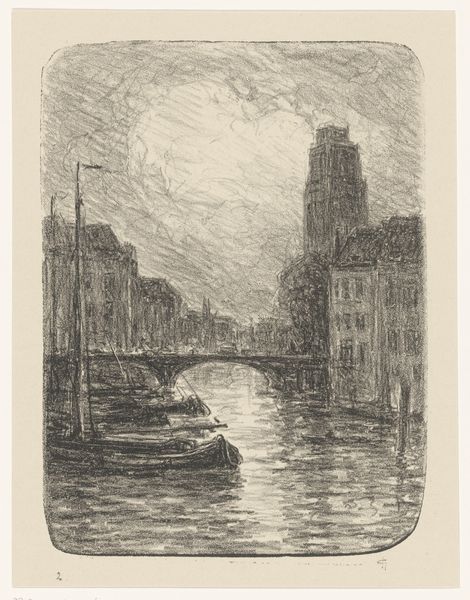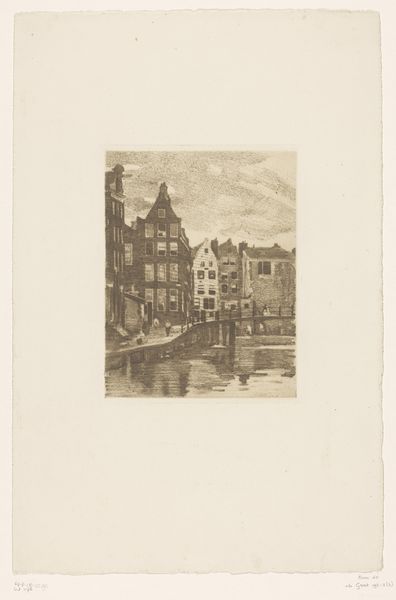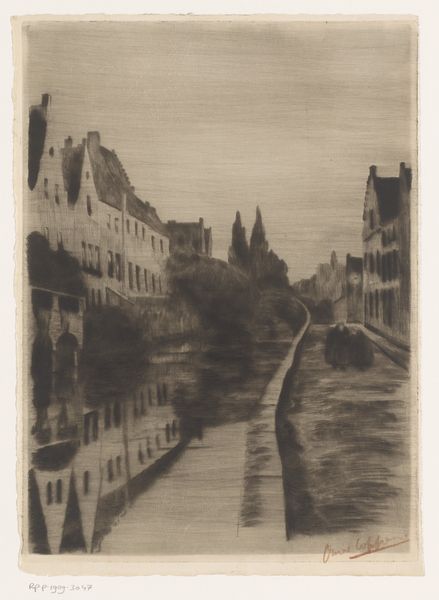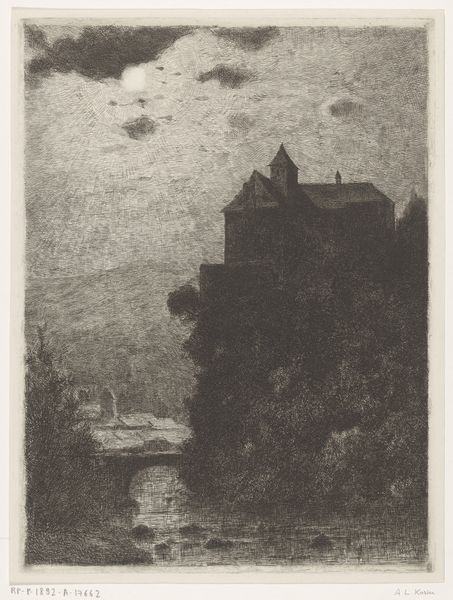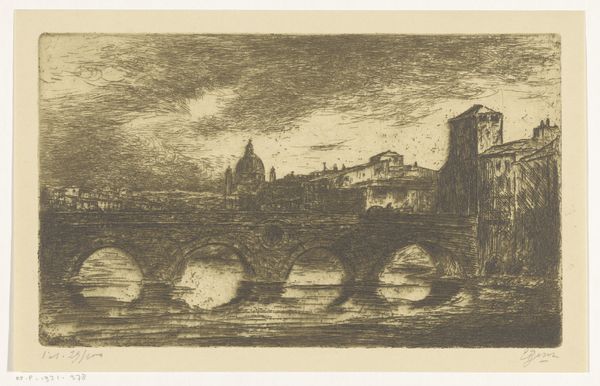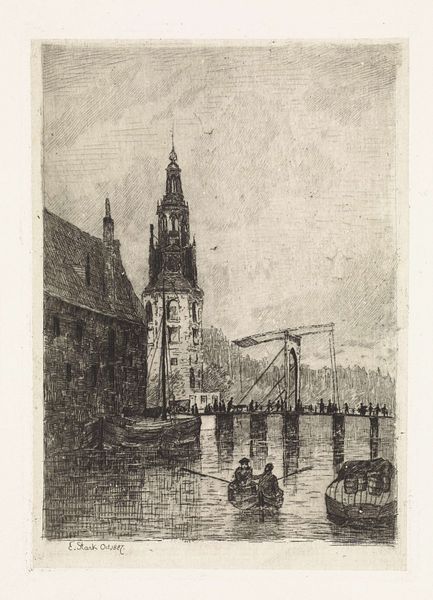
print, etching
# print
#
etching
#
landscape
#
19th century
#
cityscape
Dimensions: plate: 21.4 x 14.5 cm (8 7/16 x 5 11/16 in.) sheet: 35.3 x 25.9 cm (13 7/8 x 10 3/16 in.)
Copyright: National Gallery of Art: CC0 1.0
Editor: Here we have Maxime Lalanne's "Pont des Arts" from 1868, rendered as a print through etching. It’s moody, almost dreamlike. The dark bridge silhouetted against the water... What captures your attention when you look at it? Curator: Oh, the atmosphere gets me every time. It's Paris filtered through a scrim of memory. The soft glow of the moon… Lalanne wasn't just etching a cityscape; he was whispering a secret about it. Doesn't the grainy texture make you feel like you are recalling, not just seeing, the scene? Editor: It does, especially around the dome in the background! How did this etching technique shape the final look? Curator: Well, etching allowed for such subtle gradations of tone. Notice how the light seems to dissolve the edges of everything, how it softens even the Seine itself? The whole thing feels a bit blurry to our eye, now so used to photographs with such precision and accuracy, don't you think? The details are lost in that glow. It is up to our imagination. Editor: Yes, it’s way more suggestive than declarative. Like, he's hinting at the Pont des Arts, rather than defining it. The vagueness somehow makes it feel timeless. Curator: Precisely. Think about how many artists, from Whistler to the Impressionists, were grappling with similar questions about light and atmosphere at that moment. What a perfect distillation of a moment in art history! Editor: I've learned a lot. It's amazing how much feeling can be conveyed in something so…small. Curator: Indeed! Sometimes, the smallest artworks speak the loudest.
Comments
No comments
Be the first to comment and join the conversation on the ultimate creative platform.
